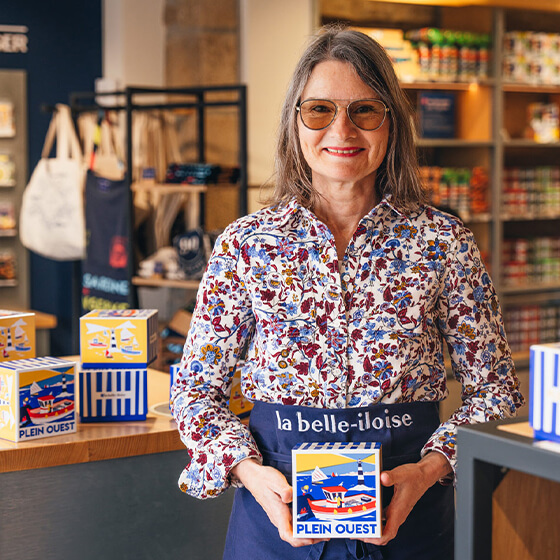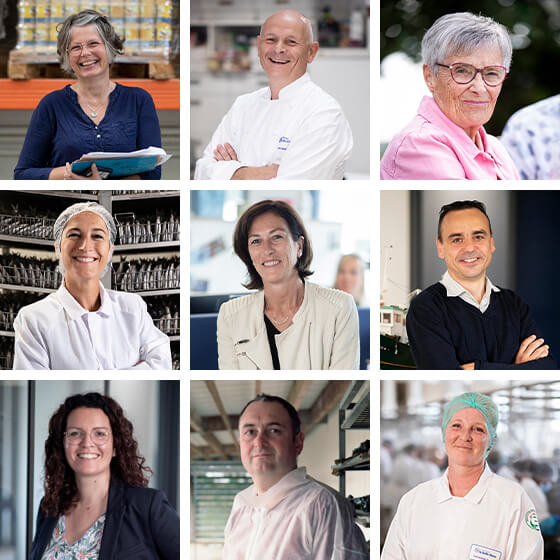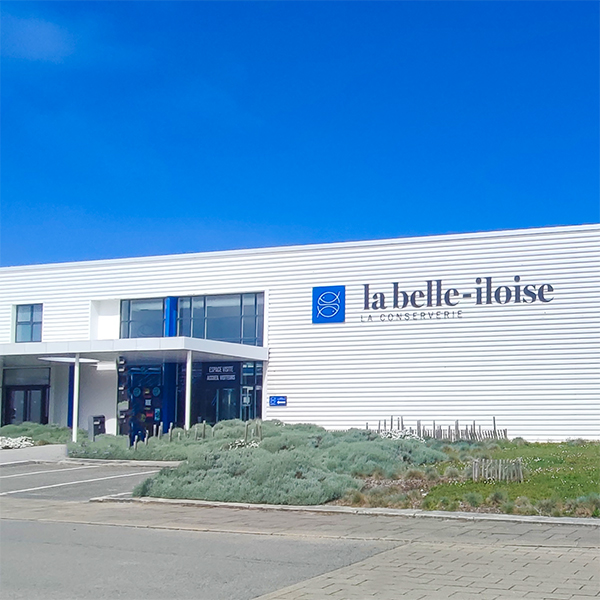Celebrating 90 years! #4: Aboard the Kanedevenn

Celebrating 90 years of existence by sharing the stories of the men and the women who have made, and continue to make, la belle-iloise. Meeting them, asking them questions, going through their lives. That's what we're bringing you, in images and words, to spend a moment together on this anniversary.
For our 4th portrait of the year, climb aboard the Kanedevenn, our partner fishing ship, in the company of Christophe Lachenays, Head of Purchasing at la belle-iloise !

At la belle-iloise, Christophe selects produce from the fishers’ catch of the day and oversees all the goods and services the company buys. He manages all the raw materials entering la belle-iloise (fish, ingredients, oils, packaging), the physical assets acquired by the company (such as store furnishing or factory equipment), and all services (transport, storage, energy, and so on). All expenses are managed and centralised by his department.

Christophe Lachenays, Procurement Manager at la belle-iloise.
WORK
- What brought you to la belle-iloise?
Before coming here, I managed procurements for an agrifood business supplying mass distribution. I came to la belle-iloise to see another way of working, a less industrial, more human one. I longed for high-quality partnerships with suppliers rather than power relations.
What’s good about la belle-iloise is that product quality is never spared because of price. People are at the heart of the company, as proven by the solidity of our relations with our partners.I was also born into a family of fishers. It seemed perfectly natural to work for la belle-iloise. It’s funny; my mother worked here as a seasonal worker a very long time ago when the cannery was still in Port-Maria.
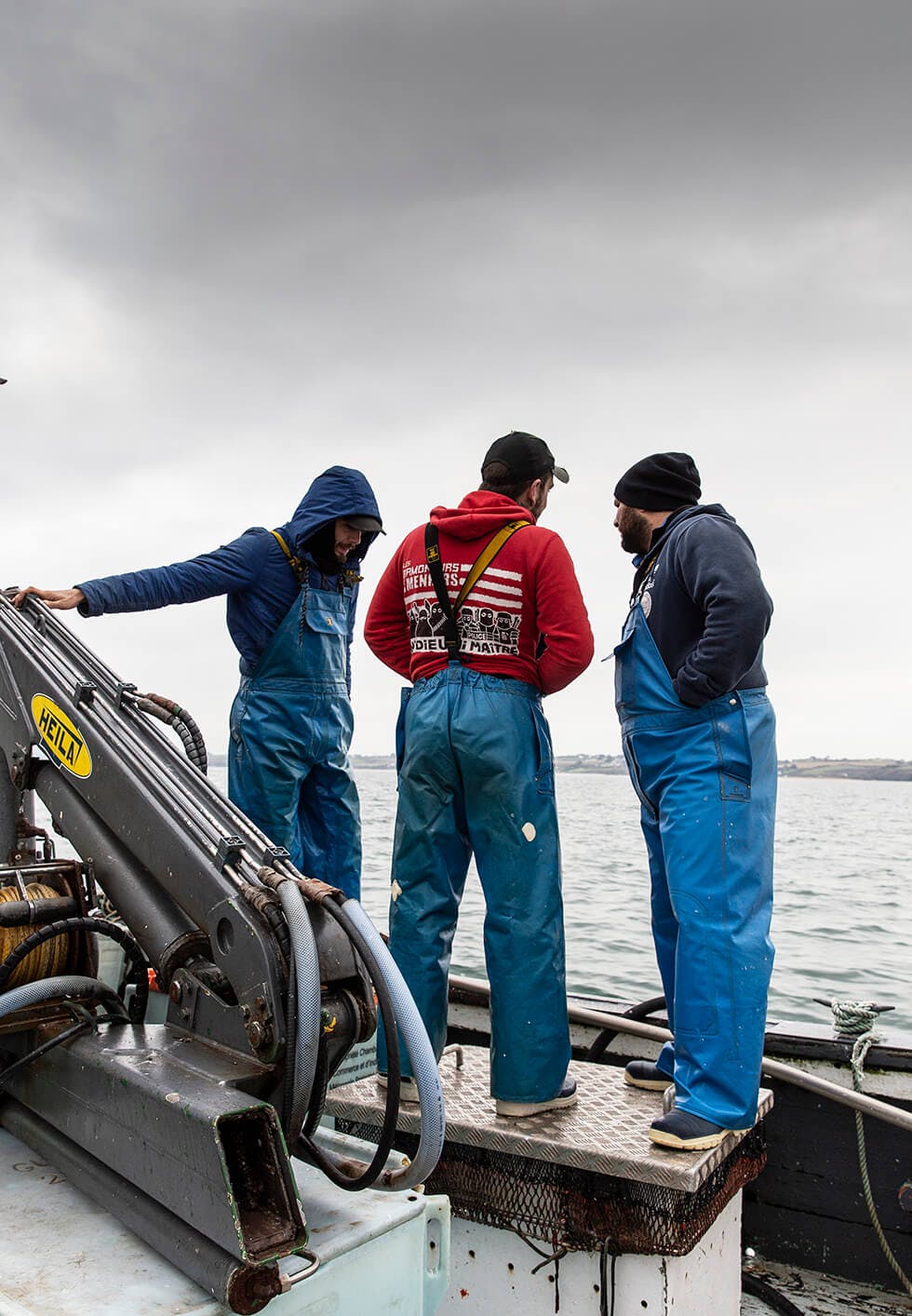
Setting sail with the Kanedevenn crew.
- What is la belle-iloise’s procurement policy?
For us, buying isn’t just about getting the best value for money. It’s also about choosing suppliers with great regard for both people and the environment, and similar values to la belle-iloise. We are here for the long haul, meaning that our activities must be profitable and benefit all. As such, we work with as few intermediaries as possible, sharing fairly for a win-win situation for all.

The Kanedevenn, a 14-metre-long sardine boat, perpetuates traditional, sustainable fishing.
- How would you describe the management team at la belle-iloise?
2It’s a management team that engages with staff and is constructive. You may not always agree, but that doesn’t mean you judge others. You can be open to differences while championing your point of view. Above all, there has to be an exchange. That’s why the company’s values are respect, stringency, flexibility, and enthusiasm –the four ingredients needed to work well in a team. Caroline Hilliet Le Branchu, our CEO, drives this vision and instils a collective mindset in the teams.Here, we don’t look after number one; we move forward together and do so together.With our partners and fishers, it’s the same. They need to be happy with the relationship, see a benefit in it, and have transparency.

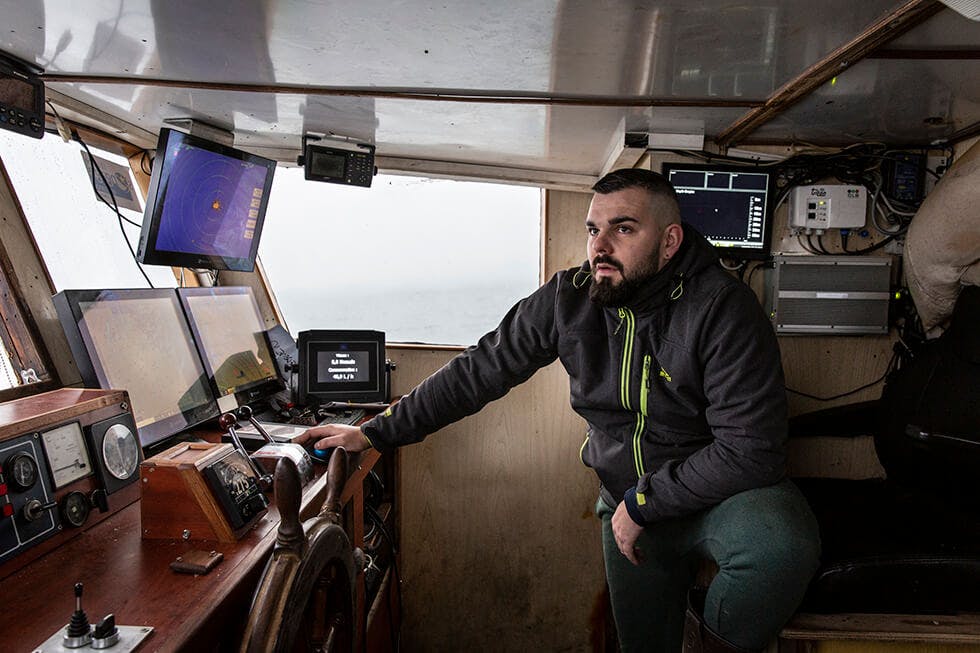
Anthony Gourret, Kanedevenn’s skipper, watches his screens intently searching for a shoal of sardines.
- What’s your best memory at la belle-iloise?
The best moments are the euphoric feelings you always have when stress levels drop. During the sardine season, I have to find fresh fish the same day for the day after or even that very same day. At times it’s nigh-on mission impossible! When I learn early on that the first fishing boat I was counting on has broken down, and the second can’t find what I want, I start losing hope as the day goes on. So, when the skipper of the third finally calls in saying, “Good news, I’ve caught some fish!” and I tell the teams, “It’s all good. There’ll be sardines tomorrow!” of course, there is a collective sense of euphoria as we were all waiting on tenterhooks for good news.
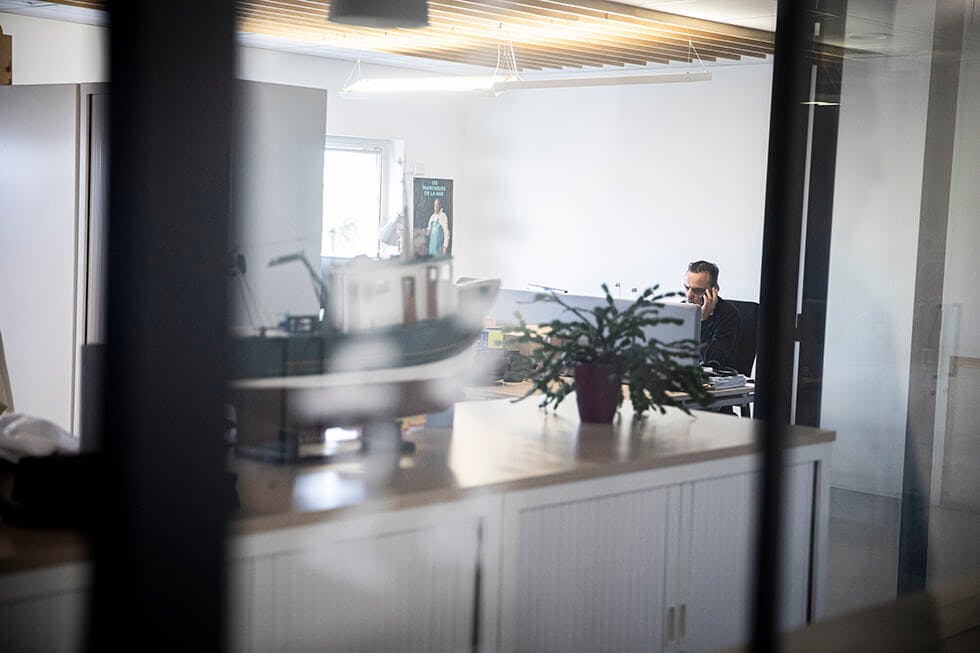
Christophe calls the fishers every day to source the fish that will be caught that night, ready for delivery and processing at la belle-iloise the next day.

Sardines can be caught at night, too, when they are searching for food (zooplankton).
FISHING
- What are the relations like between la belle-iloise and fishers?
We have solid relations with our fishers based on proximity, trust and transparency. I talk to the fishers two or three times a day during the seven months of the sardine season. Our discussions are very open –we understand when we need to make an effort. Cultivating relations is important, like the one with the Kanedevenn. We’ve worked together for 15 years, and the boat’s new skippers are 25 and 32 years old.They will be there for a while and know that la belle-iloise will be too.
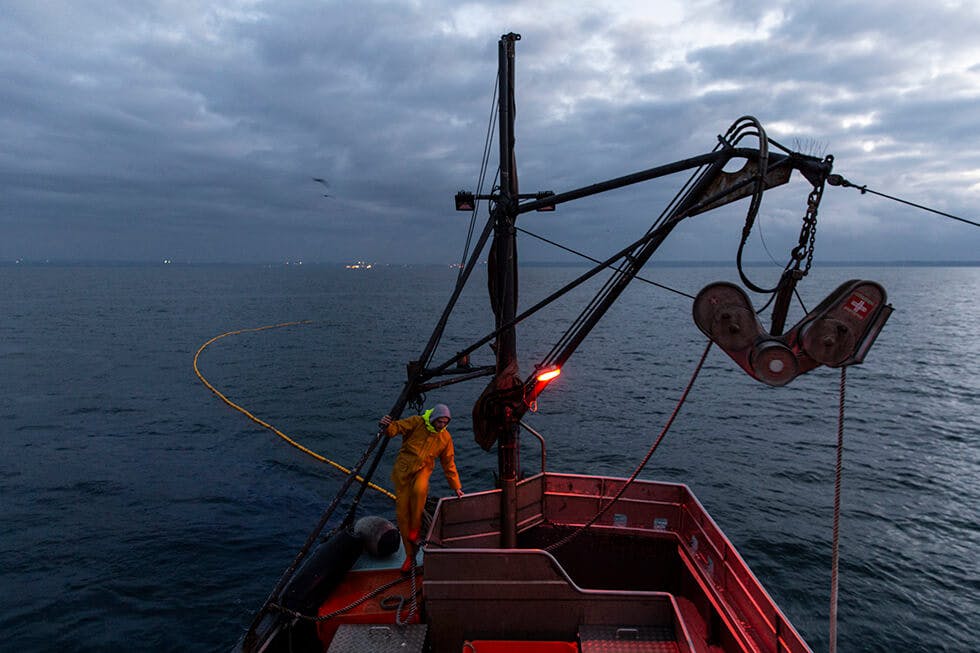
Once the shoal of sardines is detected, the fishers lower the ring net into the water.
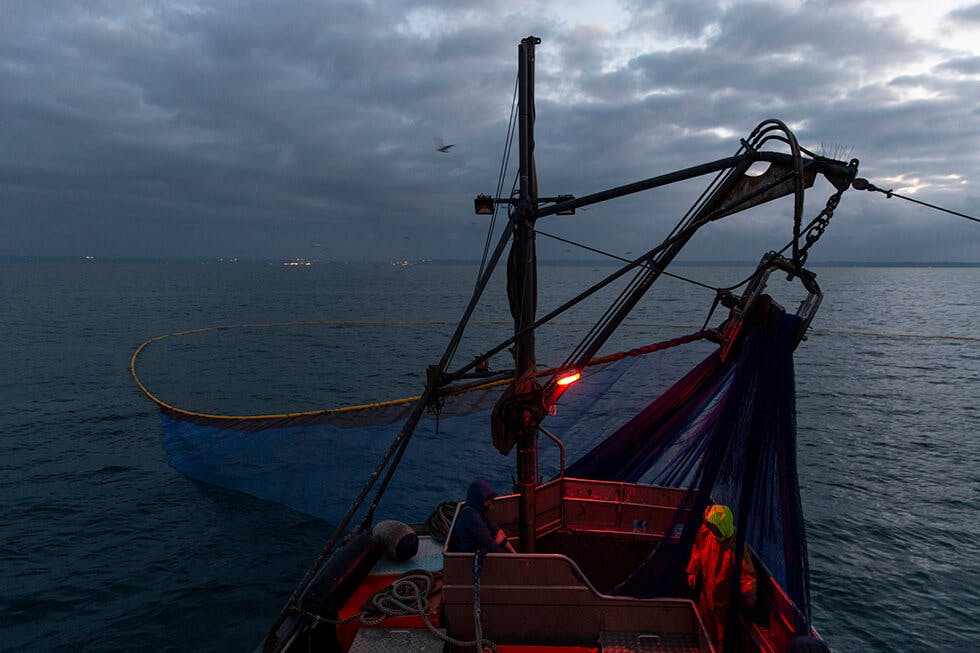
The net surrounds the fish at high speeds without suffocating them or scraping the sea floor.
- How does transparency manifest itself with the fishers?
La belle-iloise is accredited by the French authorities as a weighing operator. As such, it checks catches and the volumes of fish taken from the sea. We weigh all the fish delivered by the fishers. We are fully transparent, pay for what was weighed, and guarantee our customers that our sardines were indeed caught at sea. Few companies do that. Fishers know that when they deliver goods to la belle-iloise, they will be paid the exact weight of the fish.There are no dirty tricks at la belle-iloise; we are fair, and that’s what fosters this trust. We work on it every day and do our utmost to ensure there are no doubts. When I talk with a fisher on the phone, we discuss everything. They tell me where they fished, the count (editor’s note: quantity of fish per unit of weight), whether the fish were caught early or late in the day and the quality, and so on. In exchange, I give the fisher information about the quality of the fish received, contact icing, etc. It’s beneficial for both parties.
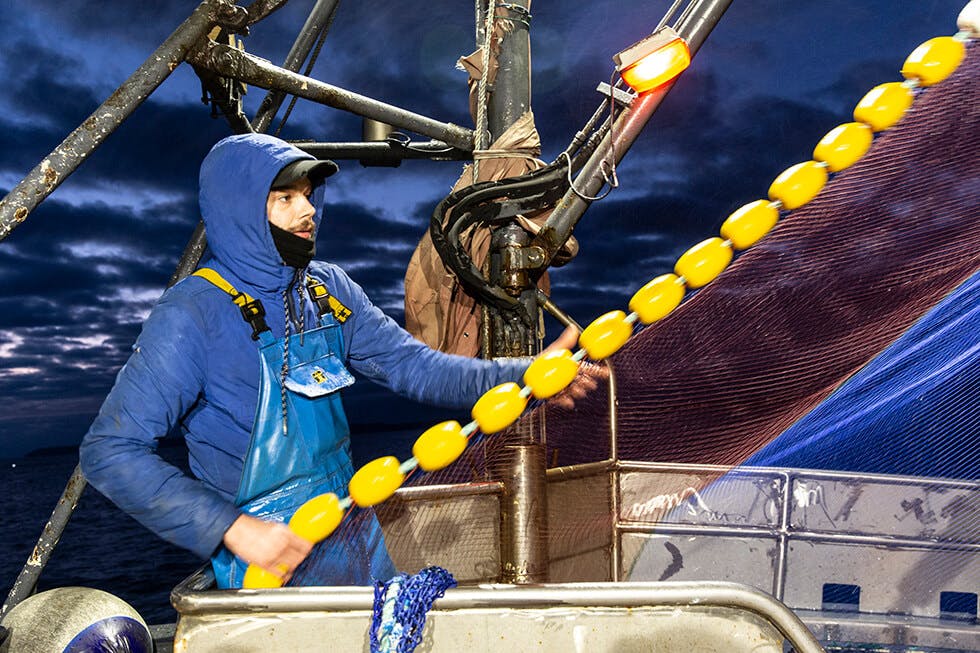
The pursing line closes the lower part of the net to form a pouch that keeps the fish inside.
- Do you go and see the fishers regularly?
As often as I can, I like being on the ground and the operational side of things. We have close contact with the Quiberon boats as they are near the factory. I went to the port of Lorient the day before last and will go to a meeting with fishers in Finistère on Friday. It’s important to see each other in the flesh. It’s easier to understand each other’s challenges when you see the reality and easier to provide solutions because we communicate better.

If the catch was not what was intended, we open the net, and the fish return to the sea unharmed.
- The sardine season is upon us.How do you feel?
Like every other year, we’ll do what it takes to ensure the season goes well.Sometimes there’ll be fish, other times none, the weather will be fine, other times not. We’ll see! Right now, we’re just getting going. It’s unclear which ships will go out to sea. So, I’m calling pretty much everyone and doing the rounds.I need to be available for calls from 6:30 a.m.to 9:00 p.m., but it can be later, depending on when each fisher goes out to sea. I enjoy it and always give my allto make we get there. If that means not sleeping one night to have fish the next day, then I won’t sleep. It’s not an issue.
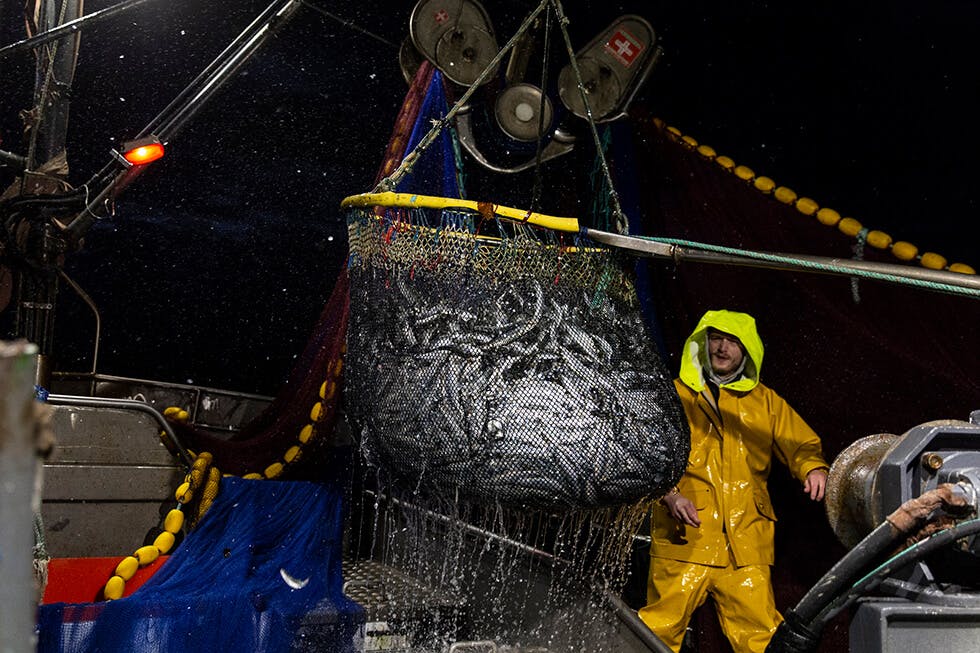
The sardines are brought on board with a large scoop known as a dip net.

They are immediately plunged into puncheon tubs with seawater and ice to preserve their quality and freshness.
THE LAND
- Are you a true Breton?
I’m Breton through and through, from the Morbihan area, along the sea. We are all Bretons in my family: from father to mother, and one generation to the next, since at least the French Revolution. So the Breton identity is there, in our genes. I am very open to the world, but as it happens, my whole family is Breton.
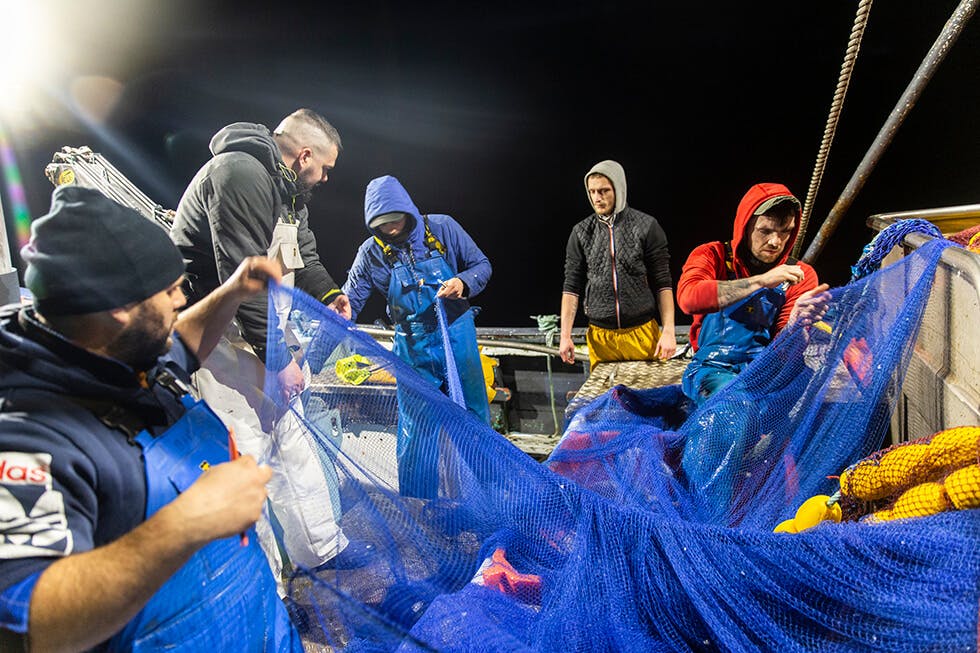
After fishing, the crew checks the ringnet and adjusts it by hand using the ancient techniques of net makers, a bygone profession.
- What does it mean to be Breton? What does it bring?
Everyone has their own perception of the Breton identity. In my case, a Breton has very close ties to the sea, but there are also land-based Bretons too. For me, being a Breton means applying a set of values, having a strong attachment to an area, and defending the region and its history. If I had to fight for Brittany tomorrow, I’d be among the first to go!

Repairing the net consists in tightening the meshes, as the size of the mesh affects fishing selectivity. It’s about making sure we only catch sardines.
THE SEA
- What characterises the sea and connects seafolk?
Freedom. The sea is a promise of limitless adventures. It has a seemingly never-ending horizon, where you can imagine yourself far, far away.
Seafolk are also synonymous with authenticity. We say things simply, as we feel them. I like that about my relations with fishers. Sometimes the discussions are a bit blunt, but at least they are true, and we move forward. Authenticity takes precedence.
Lastly, there’s this visceral attachment to the sea: if I don’t hear the seagulls or the sound of a backwash, it doesn’t feel right. The sea is a part of me. I can’t live without it
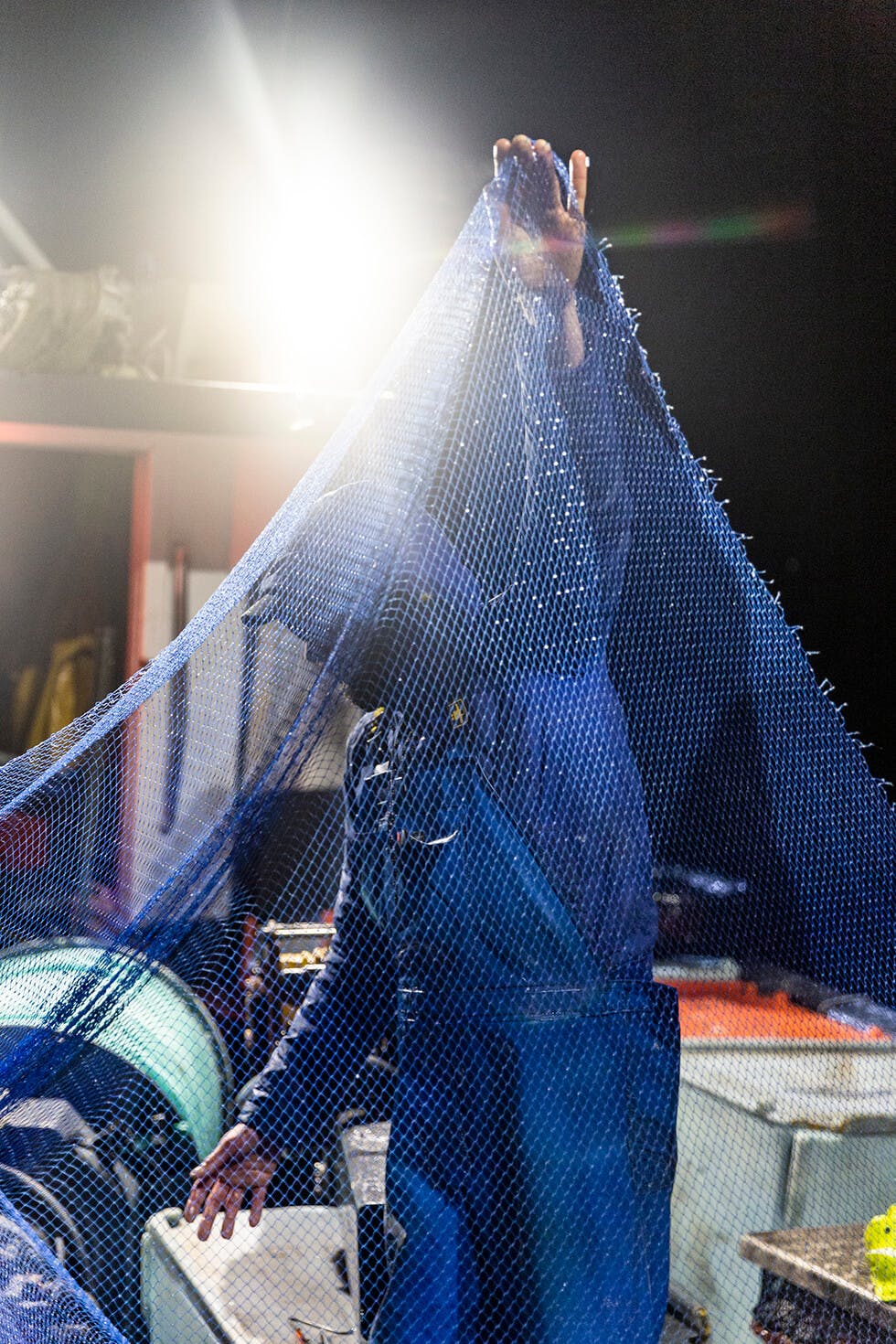
EATING WELL
- What does eating well mean to you?
I believe that we are responsible for how we nourish our bodies. And I think the body tends to seek out the food it needs. If you listen to it, you will naturally eat healthy items: fresh products as unadulterated as possible, with no additives. Eating well means eating for your body.
Eating well also means not wasting food. My fridge is empty half of the time because I hate throwing out food. In fact, I never do. If a fish is caught, it’s so that it can be eaten or tinned, otherwise, it should have been left in the water. Today, we need to all work towards zero waste on all levels. Healthy eating is part of that. Taking what you need, not too much. So you don’t throw away and waste food ultimately.
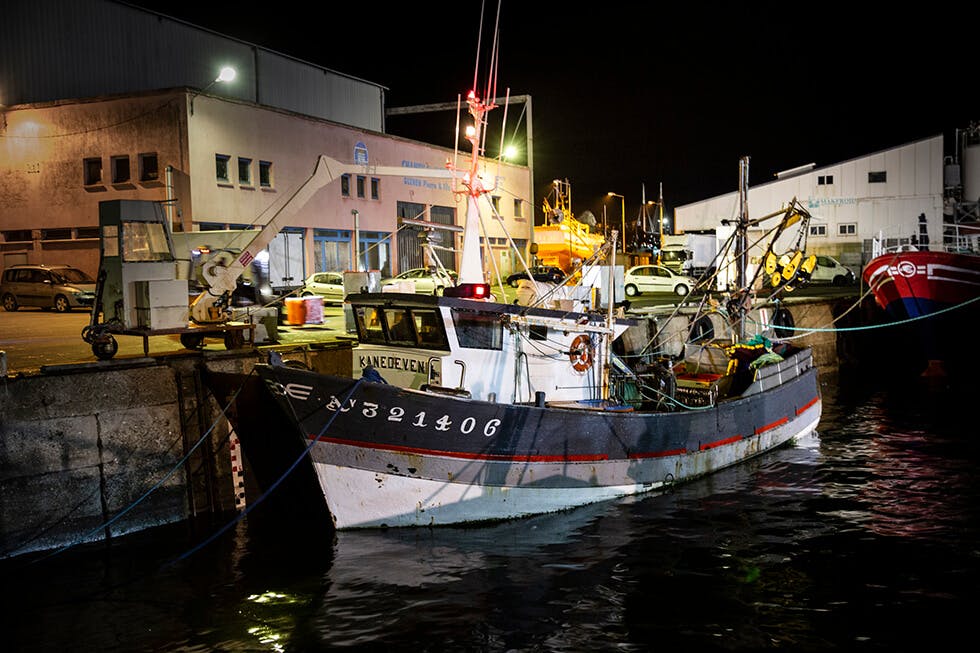
The Kanedevenn back atRosmeur, the historic fishing port of Douarnenez.Once the leading sardine port in Brittany with a fleet of nearly 800 sardine boats.
- What’s your favourite la belle-iloise recipe?
I love a lot of them, truly I do. I eat la belle-iloise every week. But if I had to choose, it would be the Sardines with olives from Niceand the Sardine and whisky cream!
- In your view, are tins a 21st century product?
Yes. There’s no need to use energy to store tins, and they’re easy to use. Their greatest asset is that they enable you to eat fish caught in season all year round. And once in the tin, the quality remains intact. Freezing, meanwhile, requires a lot of energy and the product ends up oxidising over time.
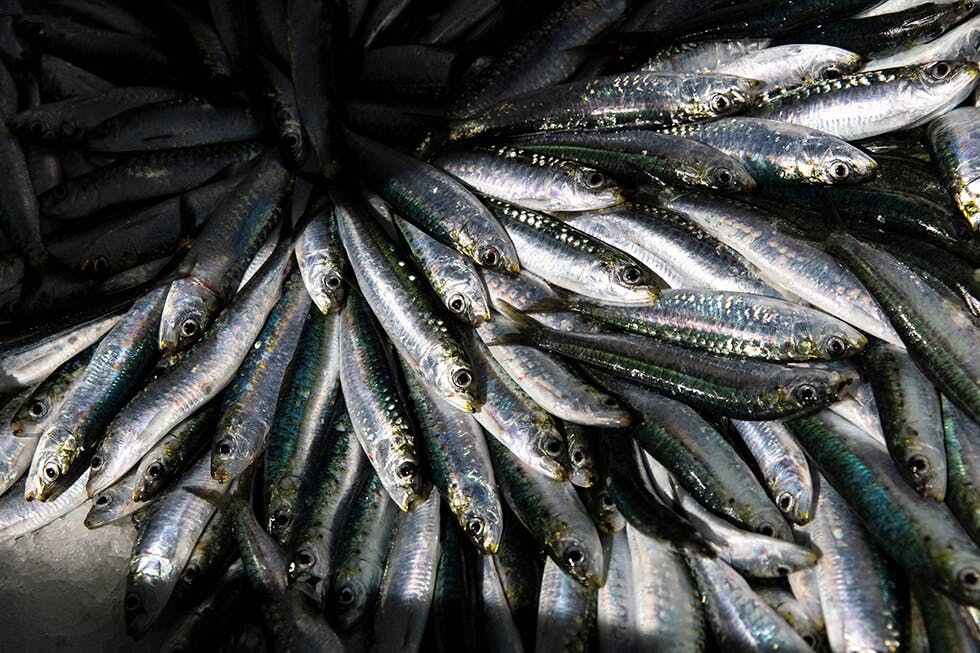
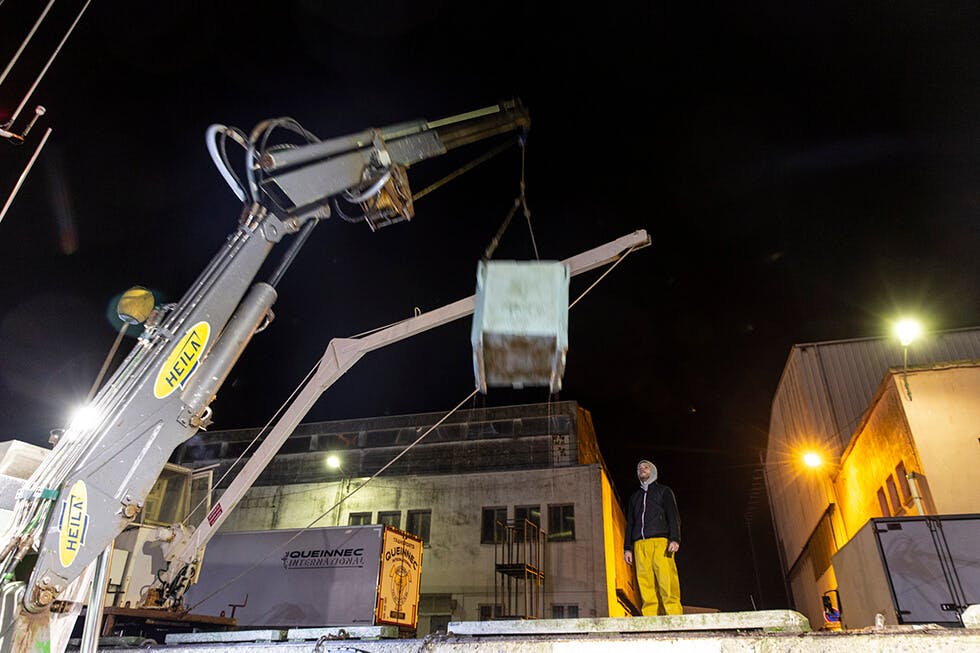
The freshly caught sardines are delivered to Quiberon for processing by the la belle-iloise production teams
THE FUTURE
- What gives you hope in 2022?
I believe that things will be better in the future. I am an optimist by nature, and I tell myself that everything is always done for the best. There is always something good to be had, even if you don’t see it straight away. It’s a certain concept of life that means I can move ahead positively.
For example, the pandemic meant we polluted less. It made us take a look at our consumption patterns and their consequences for the environment. I think that overconsumption will phase out over time. It is the result of what happened in the 20th century. But we now know enough to recognise what we have to do and progress better.
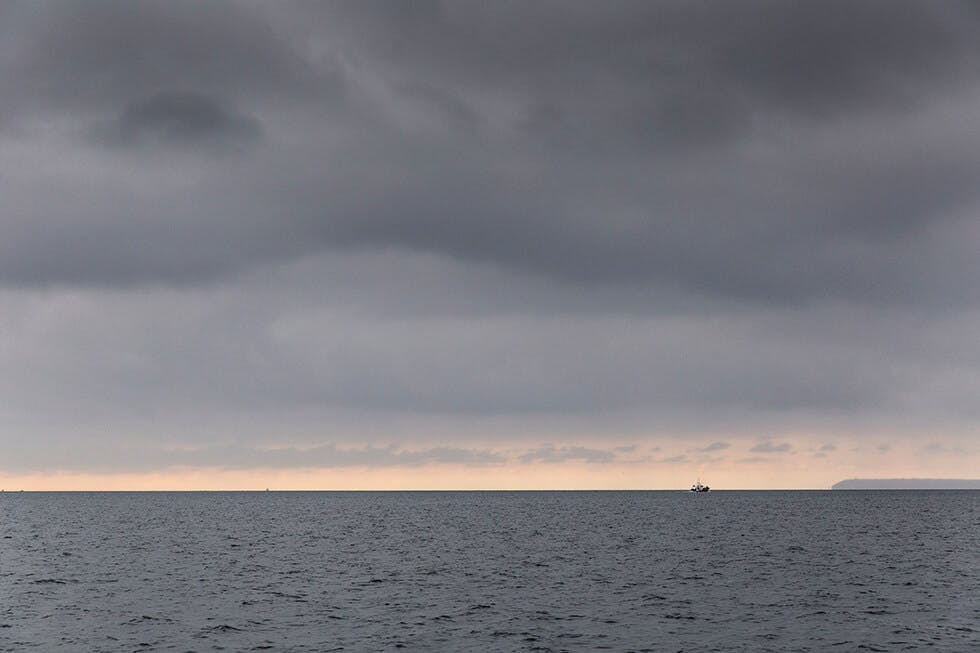
Photo credits
Photos of the Kanedevenn: Florence Joubert
Photo of Christophe Lachenays: Eric De Bagneux


